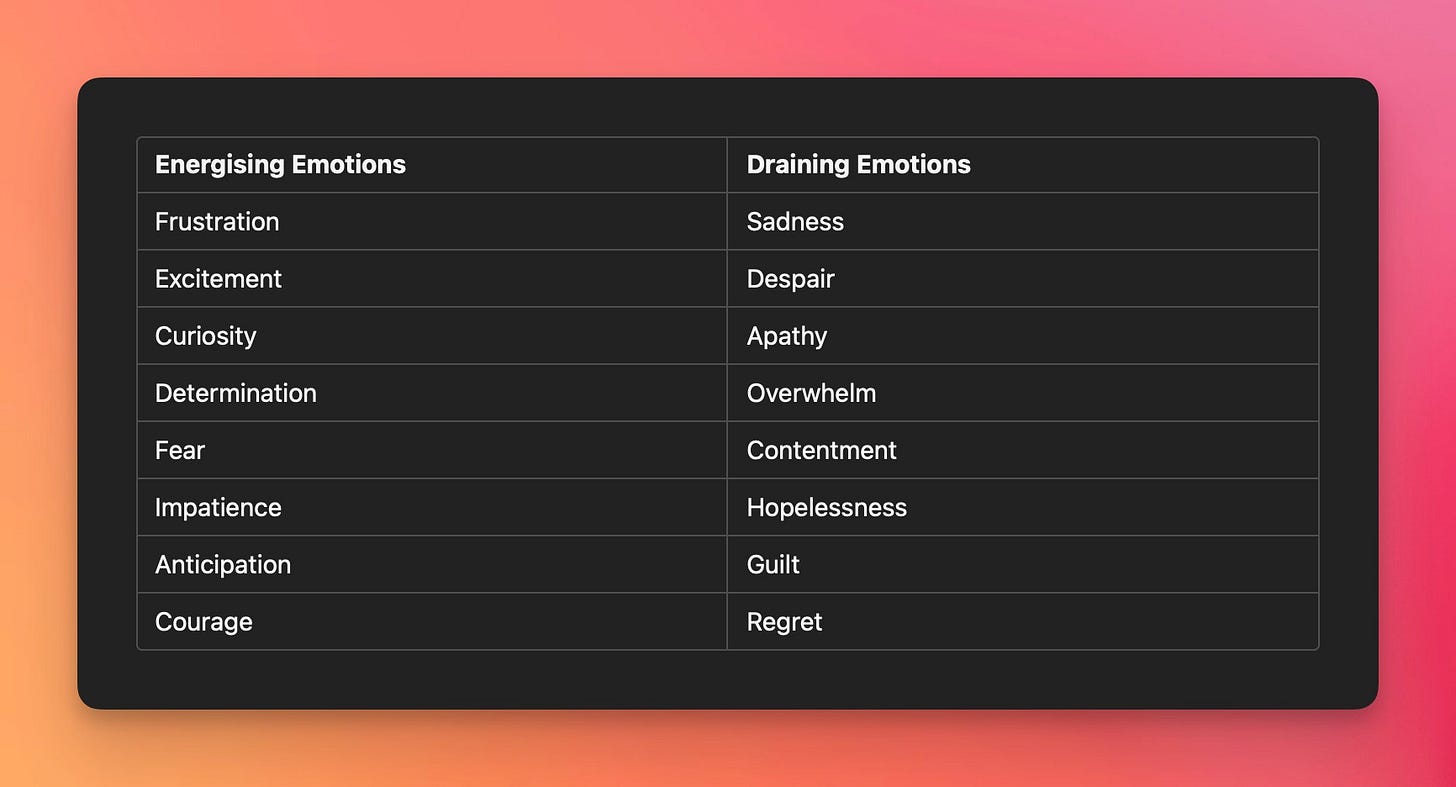ADHD and Emotional Fuel
Turning "Negative" Into Powerful
"You wouldn't like me when I'm angry"
— Bruce Banner (the Hulk)
His pulse rashes, adrenaline surges, and a mix of frustration and anger fuels his transformation into the Hulk. The Hulk is unstoppable. His rage fuels incredible power and strength.
What if you could tap into a similar sort of energy?
No, I don't mean you'll turn green and start smashing through walls (although that would be pretty cool). I'm talking about channelling emotions you experience to fuel your efforts, especially for those with ADHD.
Sounds crazy? Let me explain:
The Positivity Trap
You've probably been taught that positivity is the key to productivity.
"Turn that frown upside down," or "smile while you dial," they say. We all have those days. But forcing happiness is like trying to ride a bicycle with square wheels. It's clunky. It's awkward. It's inefficient.
For people with ADHD, this advice can be particularly harmful. When your neurochemistry already makes sustained attention challenging, being told to "just be positive" adds another impossible task to your plate.
The world is not all rainbows and sunshine.
Our experiences and emotions are diverse. We're not one-dimensional beings. So why should our approach to action and effort be one-dimensional?
Energy, Not Emotions
The real distinction isn't between "positive" and "negative" emotions.
It's between energising and draining states. Anger, frustration, and even anxiety are typically considered negative. Yet they're actually high-energy states that can fuel focus and determination.
The ADHD brain in particular responds powerfully to emotional intensity. When properly channelled, these energising emotions can create the exact neurochemical environment needed for sustained attention [1].
When emotions create energy, action becomes effortless.
Energising vs. Draining: What Drives Action
The key is to recognise which emotions give you energy, rather than take it away.
Energising emotions boost dopamine and norepinephrine. This is exactly what the ADHD brain needs for focus. They create a neurological environment where executive function improves and distractions fade away.
Here's a quick comparison:
The Emotion-Energy-Effort Method
To transform emotions into productivity fuel:
Identify the EMOTION: Become aware of what you're feeling without judgment.
Assess the ENERGY: Is this emotion giving you energy or taking it away?
Direct the EFFORT: Channel high-energy emotions into focused action rather than fighting them.
This approach works particularly well for ADHD brains, where emotional regulation challenges can be transformed from obstacles into advantages.
Shifting from Draining to Energising
It's often easier to shift between emotions of similar intensity than to make dramatic jumps.
Research shows that anger and sadness activate similar brain regions [2]. They're closer cousins than we might think. This makes the transition from a draining emotion like sadness to an energising one like frustration or impatience more accessible.
If you're feeling sad or overwhelmed, trying to leap straight to happiness or excitement can feel impossible. Instead, try this ladder approach:
Acknowledge the draining emotion. "I'm feeling sad about this project."
Look for the bridge to an energising emotion. "What about this situation makes me frustrated or impatient rather than just sad?"
Focus on that aspect. "I'm frustrated that I've put so much work in and haven't seen results."
Let that energising emotion fuel action. "I'll use this frustration to push through the next step."
A Different Perspective on Emotional Energy
The standard approach tells us to "calm down" or "be positive."
But what if that's exactly the wrong advice for someone with ADHD?
Research from Dr Russell Barkley suggests that people with ADHD don't lack emotions. They often experience them more intensely. This emotional reactivity, when properly channelled, can create the motivation and focus that's otherwise elusive [3].
Instead of fighting your emotional waves, learn to surf them.
Don’t see intense emotions as disruptions to be controlled. Recognise them as potential sources of focus and drive. It's not about letting emotions control you. It's about using their energy instead of wasting energy trying to suppress them.
Try this experiment
Next time you feel frustrated or impatient about a task:
Identify the emotion. "I'm feeling sad/stressed/relaxed right now."
Ask yourself: "Is this giving me energy or taking it away?"
If it's energising, direct it: "How can I use this energy to tackle the task at hand?"
If it's draining, look for the bridge: "How can I reframe this as frustration rather than despair?"
Don't fight your emotions. Funnel them.
Your brain's unique wiring isn't a limitation. It's a different kind of power source. Learning to use it might be your greatest productivity breakthrough.
Until next time,
Dave
References:
Surman, C. B. H., & Bilkey, T. (2013). FAST MINDS: How to Thrive If You Have ADHD (Or Think You Might). Berkley.
Lindquist, K. A., Wager, T. D., Kober, H., Bliss-Moreau, E., & Barrett, L. F. (2012). The brain basis of emotion: A meta-analytic review. Behavioral and Brain Sciences, 35(3), 121–143.
Barkley, R. A. (2015). Attention-deficit hyperactivity disorder: A handbook for diagnosis and treatment (4th ed.). Guilford Press.



